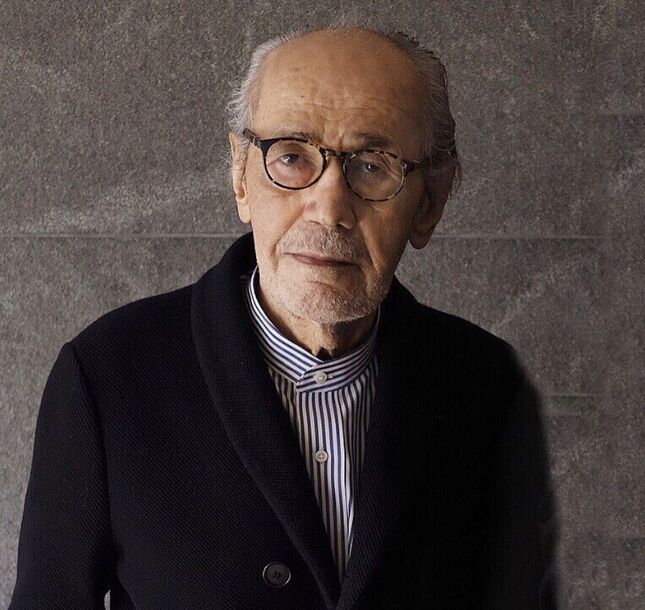News
Obituary: Siah Armajani (1939–2020)


A passionate advocate of democracy and a radical, polymath humanist who integrated poetry, mathematics, philosophy, science, and architecture into his artworks, Tehran-born sculptor Siah Armajani died of heart failure in Minneapolis on August 27, at the age of 81.
With a long career beginning in the United States in the early 1960s, Armajani is one of the most respected, and also under-recognized, artists of the postwar era. From his adopted second home in Minnesota and with an unique interest in creating spaces for public engagement, he was not a member of the New York or Californian artistic cliques that dominated American art in the second half of the 20th century. The retrospective “Follow This Line,” co-curated by Victoria Sung of the Walker Art Center and Clare Davies of The Met Breuer, toured from Minneapolis in 2018 to New York in 2019 and sought to readdress the omission of the artist’s practice from many contemporary art-historical narratives. Later that year, Ute Meta Bauer curated a survey of Armajani’s six-decade career at the NTU Centre for Contemporary Art Singapore, “Spaces for the Public. Spaces for Democracy.”, foregrounding the sculptures he designed based on American vernacular architecture to facilitate gatherings and conversations—the bedrock of secular, pluralistic societies.
Armajani studied philosophy at Macalester College in Saint Paul, Minnesota, in 1960 after he was forced to leave Iran. In his native Tehran he was involved with the pro-democracy struggle against the Shah’s military government following the 1953 coup d’état orchestrated by the US and the United Kingdom against the democratically elected government. The underground resistance’s practice of circulating letters after dark through the streets, as well as traditions of Persian poetry, inspired Armajani’s “Night Letters” series (1957–64). With interests in computing and engineering, he forged cross-disciplinary collaborations—including a proposal for a 77,250-kilometer-high tower that would extend into space, A Fairly Tall Tower (1969)—and other public structures and bridges, for which he would handcraft the models. Fascinated by the Apollo 11 moon landing, he purchased a television set to watch the historical event, and once the astronauts returned, he locked the plug and inscribed the events and duration on the screen in Moon Landing (1969). Throughout the 1970s, he explored American vernacular architecture, including in his series of more than 1,000 cardboard models, Dictionary for Building (1974–75), and many other model bridges and houses dedicated to cultural figures he admired. One of these, Lissitzky’s Neighborhood, Center House (1978), was realized at full-scale in the lobby of the Solomon R. Guggenheim Museum, in New York.
His works were featured in dozens of major exhibitions beginning with the 1962 Biennial of Painting and Sculpture at the Walker Art Center, and later, Documenta 5 in Kassel in 1972, the US Pavilion at the Venice Biennale in 1980, the Whitney Biennial in 1981 in New York, Skulptur Projekte Münster in 1987, the 1988 Carnegie International in Pittsburgh, and in group shows at galleries and museums across the US, Europe, and even, in 2004, the Tehran Museum of Contemporary Art. Along with numerous solo exhibitions at his longtime gallery Max Protetch, in New York, Armajani was given institutional shows at the ICA Philadelphia in 1985, Kunsthalle Basel and the Stedelijk Museum in Amsterdam in 1987, the Museo Nacional Centro de Reina Sofia in Madrid in 1999, the Museum d’Art Moderne et Contemporain in Geneva in 2007, and Parasol Unit Foundation for Contemporary Art, London, in 2013, among many others. One of his seminal outdoor works Bridge Over Tree (1970/2019) was re-created by the Public Art Fund in Brooklyn Bridge Park in 2019.
In his Manifesto: Public Sculpture in the Context of American Democracy (compiled 1968–78, revised 1993), he cited philosopher Ralph Waldo Emerson’s embrace of the common, and pointed to public sculpture as the continuation of modernism’s efforts to demystify art and insert it into civic society as “a tool for activity.” This philosophy inspired many of his public gazebos, gardens, and reading or lecture rooms, and later his iconic 114-meter Irene Hixon Whitney Bridge in Minneapolis, connecting a park and a sculpture garden, that features a poem written by John Ashbery. Armajani was later commissioned to design a 34-meter cauldron structure for the Olympic flame at the 1996 Summer Olympics in Atlanta.
Armajani’s works are in the collection of numerous museums, including the Walker Art Center, Minneapolis; the Museum of Modern Art and the Metropolitan Museum of Art, New York; the National Gallery of Art and the Hirshhorn Museum and Sculpture Garden, in Washington, DC; the British Museum, London; M+, Hong Kong; and the Stedelijk Museum, Amsterdam.
He is survived by his wife Barbara, a classmate from Macalester, whom he married in 1966.
HG Masters is the deputy editor and deputy publisher of ArtAsiaPacific.
To read more of ArtAsiaPacific’s articles, visit our Digital Library.







